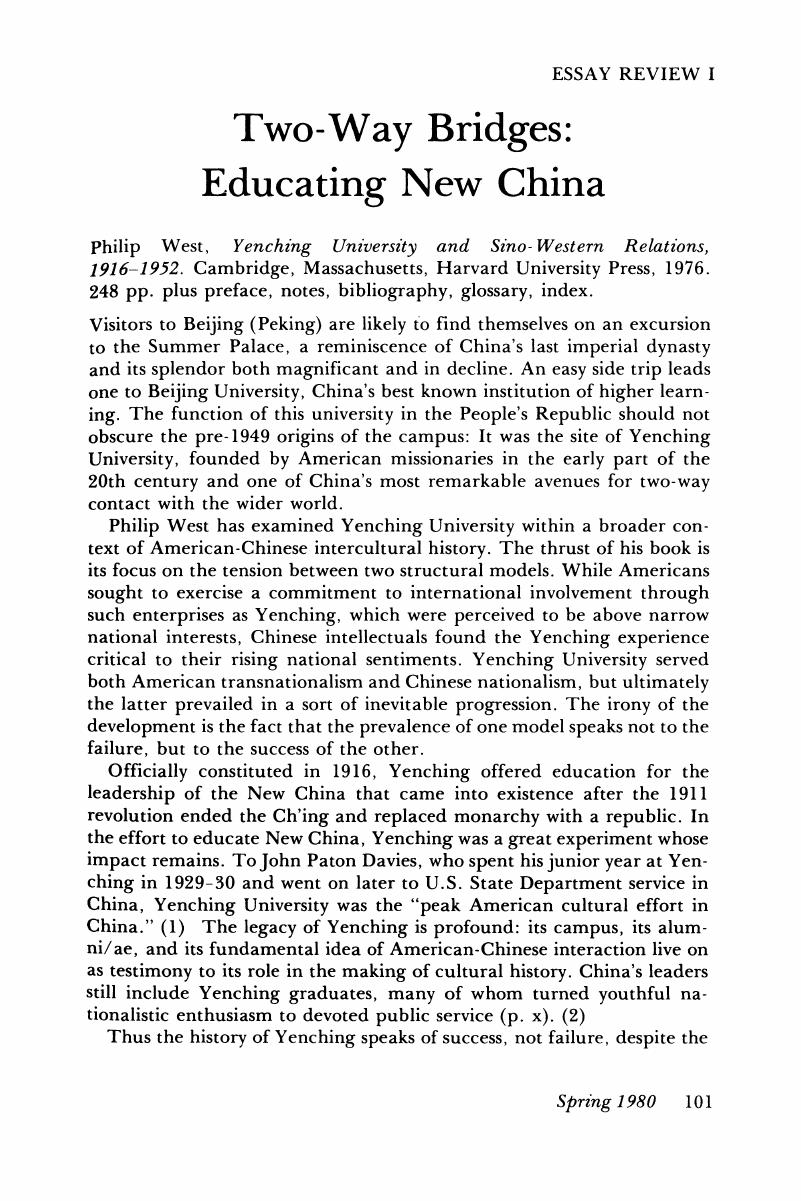Published online by Cambridge University Press: 24 February 2017

1. Davies, John Paton, Dragon by the Tail: American, British, Japanese and Russian Encounters with China and One Another (New York, 1972), p. 143.Google Scholar
2. See Israel, John and Klein, Donald W., Rebels and Bureaucrats: China's December 9ers (Berkeley, 1976).Google Scholar
3. Hemenway, Ruth V., Ruth V. Hemenway, M.D.: A Memoir of Revolutionary China, 1924–41, ed. Drake, Fred W. (Amherst, 1977).Google Scholar
4. Ibid., pp. 75–76.Google Scholar
5. Ibid., p. 219.Google Scholar
6. Lutz, Jessie Gregory, China and the Christian Colleges, 1850–1950 (Ithaca, New York, 1971), chronicles the educational effort of Protestant missions in China.Google Scholar
7. Kuklick, Bruce, The Rise of American Philosophy: Cambridge, Massachusetts, 1860–1930 (New Haven, 1977), focuses on the development of one discipline in one university context but suggests the significance of the period culminating in 1930 for the growth of institutional higher education generally.Google Scholar
8. Davies, , Dragon by the Tail, p. 144.Google Scholar
9. Ibid.Google Scholar
10. Ibid., p. 143.Google Scholar
11. Ibid.Google Scholar